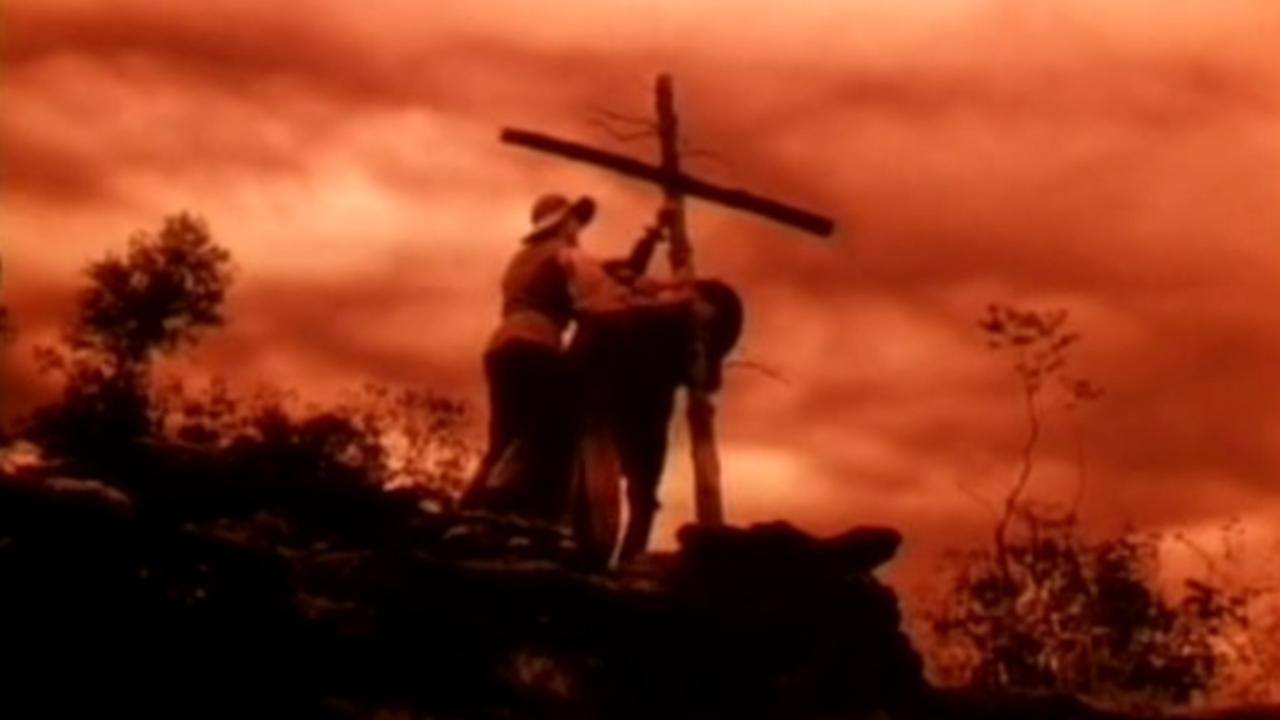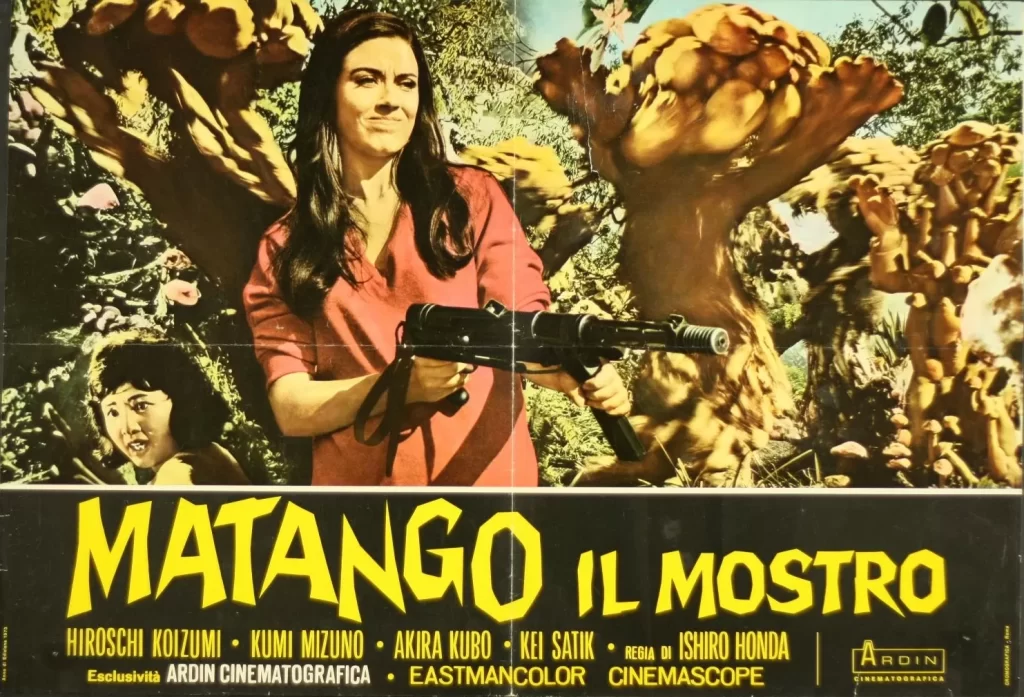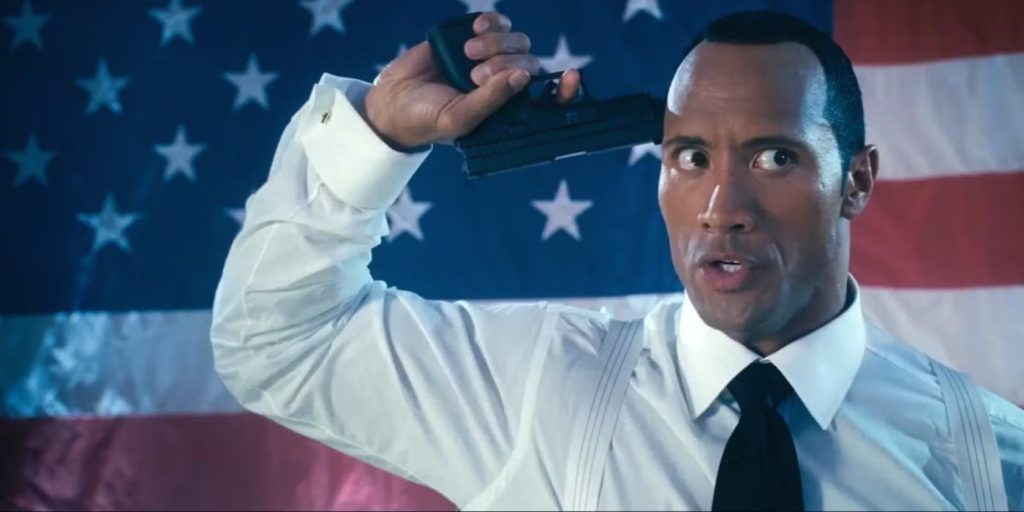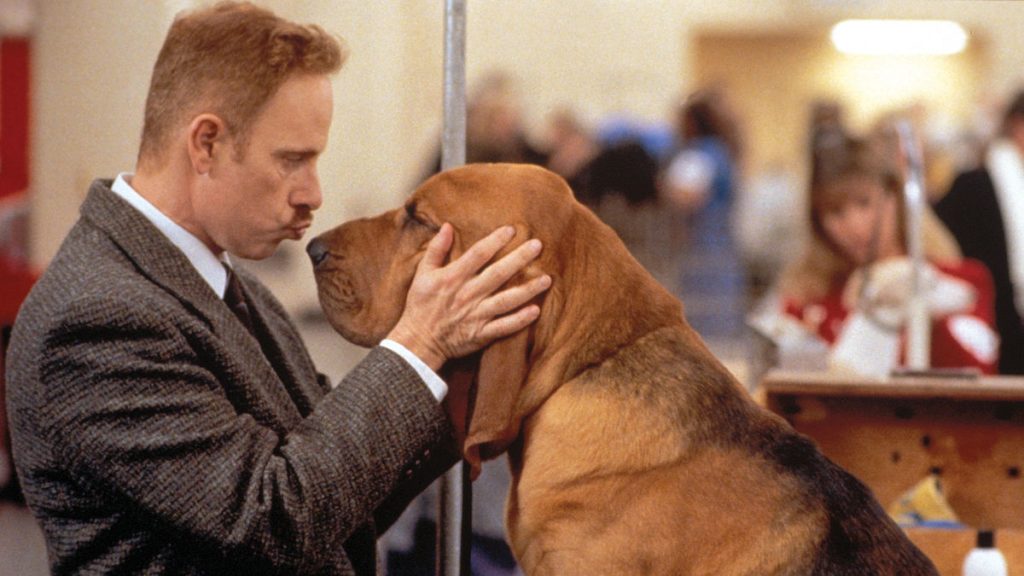The cinematic folk horror revival has been going strong for the better part of a decade now, and it’s currently enjoying the spotlight thanks to the release of Kier-La Janisse’s exhaustive documentary on the genre Woodland Dark and Days Bewitched, as well as the massive Blu-ray box set All the Haunts Be Ours, released by Severing Films (who also produced Janisse’s film).
Central to both the documentary and the box set is a forgotten minor masterpiece of American folk horror: Eyes of Fire (1983). Interest has been steadily growing for the 1983 film over the last several years, and now that it’s finally available on physical media and streaming, it’s assured a place in the larger horror canon.
The debut feature from director Avery Crounse, the film is a blazingly original and artful mishmash of genres—folk horror, fantasy, historical drama, acid Western—and a direct predecessor to (and likely influence on) any number of similarly-themed films from over the past 20-plus years, including The Blair Witch Project, Ravenous, Antichrist, A Field in England, The Witch, Mohawk, and In the Earth.
Set on the American frontier in the year 1750, Eyes of Fire follows a small band of religious outcasts who abscond from their colonial settlement at the behest of their preacher leader, the Reverend Smythe (Denis Lipscomb), after he’s nearly lynched for adultery and bigamy. In their group is a beautiful but disturbed Irish telepath (Karleen Crockett), and hot on their trail is the cuckolded husband and father of two of the members (Guy Boyd). Fleeing into the woods belonging to the Tawnee tribe, they stumble upon an abandoned township resting in a lush valley and attempt to set up a new religious settlement. But they quickly discover that the native legends about a devil witch lording over the land are more than mere superstition, as they fall victim to the dark powers of a hideous supernatural being who siphons the souls of trespassers and traps them in the trees. As the group splinters—with some members falling into madness and others attempting to escape—the stage is set for a magical showdown between the forces of light and darkness.
Eyes of Fire is as ambitious a low-budget horror movie as has ever been made, with first-time director Crounse—who’d made his name as a professional photographer—managing to oversee a complicated production set almost entirely in nature, including an important sequence set on a floating river raft. (Ironically, Crounse had previously been invited by documentarian Les Blank to capture behind-the-scenes footage of Werner Herzog’s notoriously difficult production of the river-set Fitzcarraldo, which Blank would later assemble into the fantastic feature doc Burden of Dreams.)
As if filming in nature wasn’t ambitious enough, the movie is loaded with special effects, both practical and optical. And while the central creature design—a hulking swamp hag seemingly made from mud and leaves—has a certain B-picture quality to it, it also has a strikingly uncanny quality that makes it legitimately unnerving. On a design level, the witch is reminiscent of the iconic beast in Jacques Tourner’s classic Night of the Demon, as well as the dumpster demon and woodsman spirits in David Lynch’s Mulholland Drive and Twin Peaks: The Return, respectively. The other effects, especially the human faces growing within the trees, are more traditionally effective, and it’s no wonder that, according to Crounse, his art director and department were scooped up for Nightmare on Elm Street specifically because of their work on the film.
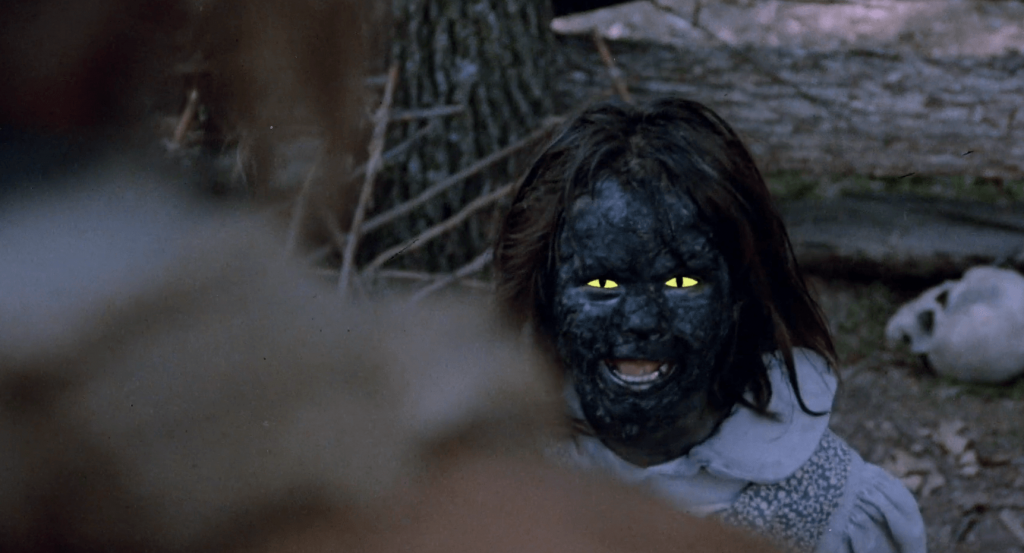
But even more memorable than the practical effects are the optical effects that Crounse himself layered over his print in post-production. The second half of the movie is a hallucinogenic blast of double exposure, negative exposure, collage, strobe effects, and Fata Morgana. Watching the film today, you can just imagine a young Nicolas Wending Refn and especially Ben Wheatley having their minds blown by it.
Unfortunately, critics at the time weren’t as receptive to the film’s beauty, or for that matter, its originality. Given the critical antipathy for the grimy slasher films of the era, you’d think reviewers would appreciate the uniqueness of the film’s story and setting, to say nothing of its literary and historical qualities. Crounse’s script is heady amalgamation of well-researched Tawnee mythology, American and German folklore, early American gothic literature (particularly the writings of Nathaniel Hawthorne), and the history of American spiritualism during the Second Great Awakening (with Rev. Smythe sharing more than a little DNA with Joseph Smith).
But that wasn’t the case, with most critics at the time dismissing the film as a cheap Exorcist knockoff. Luckily for Crounse, the reviews didn’t affect the success of the film, although they may well have had it had a traditional release. Rather than selling his movie to producer/distributor, he teamed up with Spectacular Entertainment and distributed it himself. The strategy proved a financial success in the short term—one weekend Eyes of Fire even had the highest per screen average in the country, not counting a Woody Allen movie playing in early release in a single theater (likely Broadway Danny Rose)—however, it also led to the movie disappearing once it was on home video.
The film was initially available on VHS, but until this past month, had never been put out on DVD/Blu-Ray or streaming. As such, it fell into obscurity, although as folk horror has gained in popularity over the years, its reputation has grown, with rep screenings and uploaded streams on YouTube and the like giving it a small cult following. However, the quality of those transfers—taken from faded VHS copies—did not do the film justice, and it’s only now, thanks to the restoration done by Severin, that audiences are able to appreciate how truly brain-melting the visuals are.
To date, Crounse has only directed two other features (including his follow-up in 1988, The Invisible Kid, a teen comedy spin on The Invisible Man that earned even more critical disparaging reviews than his previous effort). It’s a shame, since it’s not difficult to imagine a world in which Eyes of Fire doesn’t fall through the cracks, and Crounse goes on to have a career similar to that of Sam Raimi or Peter Jackson.
At the same time, Eyes of Fire is precisely the type of film one delights in rediscovering, a work of folk horror that carries with it a mythical aura and buried power.
“Eyes of Fire” is available tomorrow on Blu-ray, in both a stand-alone edition and as part of the “All The Haunts Be Ours” box set. It is also streaming on Shudder.
